THE SQUARE ROOT HOUSE
TINY ECOHOUSE
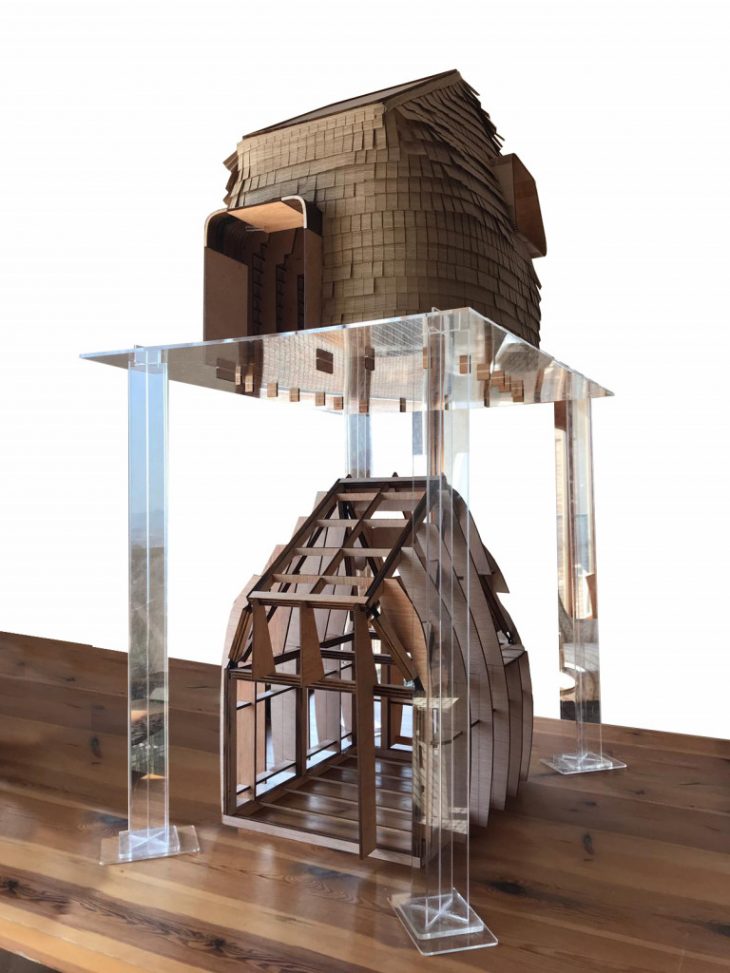
“recognizing the need is the primary condition for design”- Charles Eames.
TINY ECOHOUSE
In the scenario that we live today, the urgency of taking drastic measures in relation to climate change is one of our biggest concerns. Tiny living offers a path to a smaller environmental footprint, greater financial freedom, and ultimately a self-sufficient life. The movement enables you to live a life on your own terms, adapted to your needs.
In a world full of commodities, reducing the clutter can help us focus on what’s important.
Every millimeter of space needs to be accounted for.
THE CONCEPT
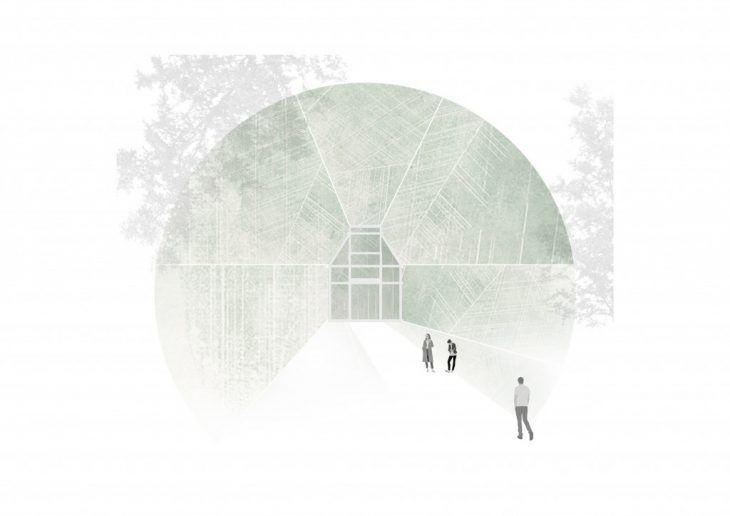 I- To build a house is to “set down roots”
I- To build a house is to “set down roots”
II- The square root is the unmultiplied essence of a number, like the tiny home is the unmultiplied essence of a home.
III- From a “square” root grows a round home
FORM DEVELOPMENT
We took a conventional design and flipped it so that the house grows from inside out, ensuring interior space becomes a major driver in design.
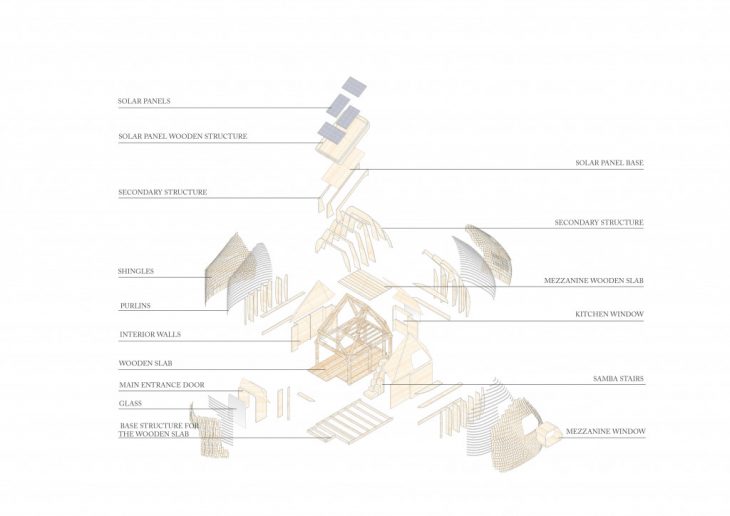
THE STRUCTURE
The structure consists of two layers: a main frame structure and an adaptable substructure. Using pine wood from Valldaura with 150x150mm section, the main structure is a rational frame which provide a 4200×3200 mm rectangle space for the interior.
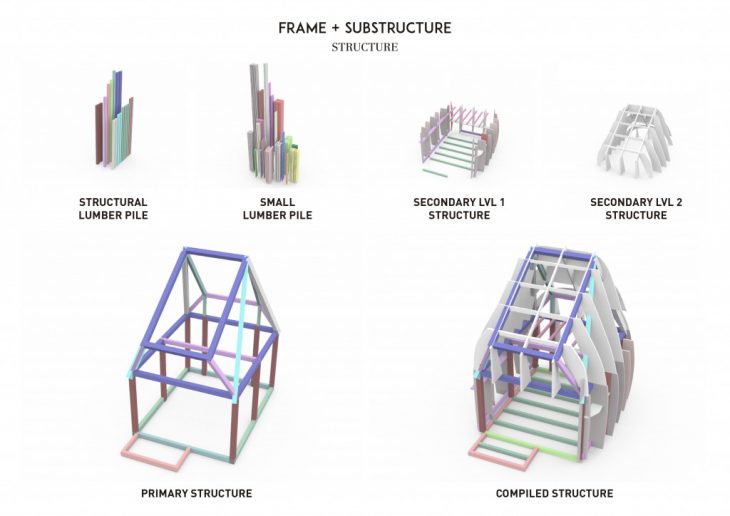
The substructure is made of 50 and 30 mm wood panels also from Valldaura. It is a waffle system that links the rational interior space with the curved envelop. The distance between each panel is 700mm, which results in a useful module for shaping the interior space.
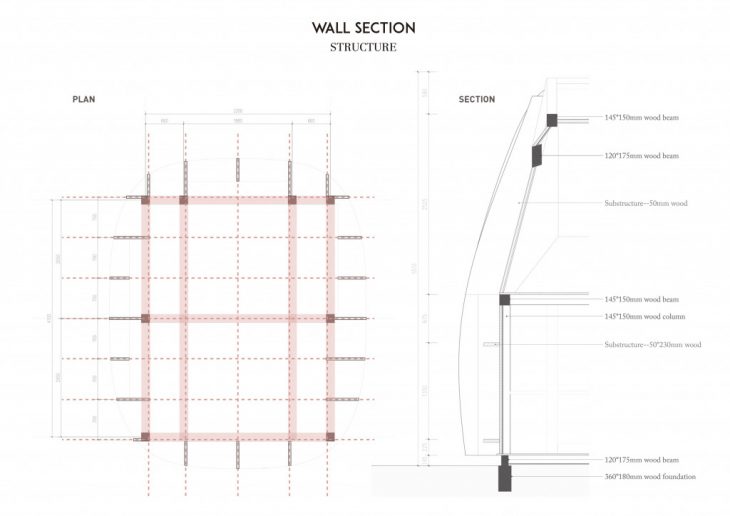
The joints are mostly tenon connection that will be tighter along time and very suitable for a frame structure.
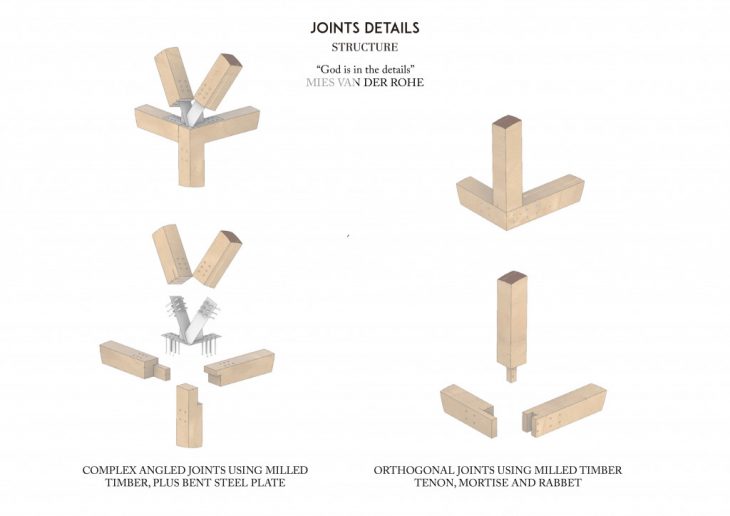
THE ENVELOPE
The shingles are elements which, overlapped, generate a covering for roofs or walls. These elements are typically flat, rectangular shapes laid in course from the bottom edge of the roof up, with each successive course overlapping the joints below.
The use of that technique enables the design the possibility to acquire different forms, solving the whole envelope with one same component.
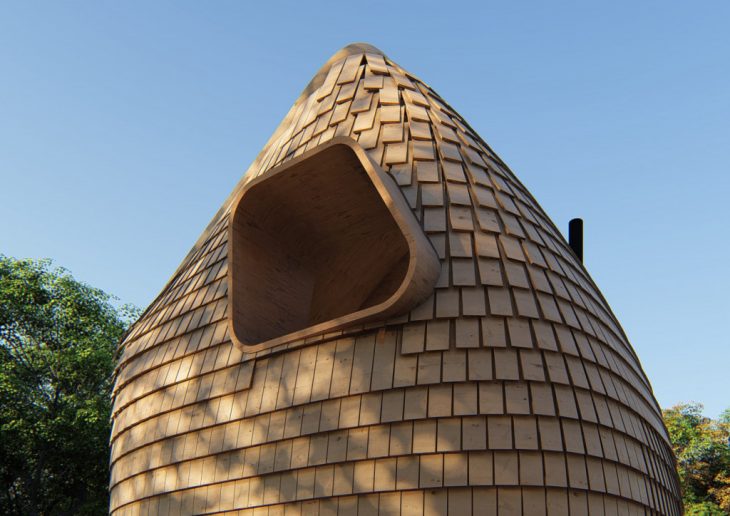
Furthermore, the material of that element is oak wood from Valldaura. Through parametric design the ancient element acquires a more advanced approach.
Through different studies, the size of the shingles is defined in order to achieve a coherent relation between number of shingles and capacity to adapt to the curved form.
Different studies were also explored in order to design the way the shingles interact with the different openings the envelope have.
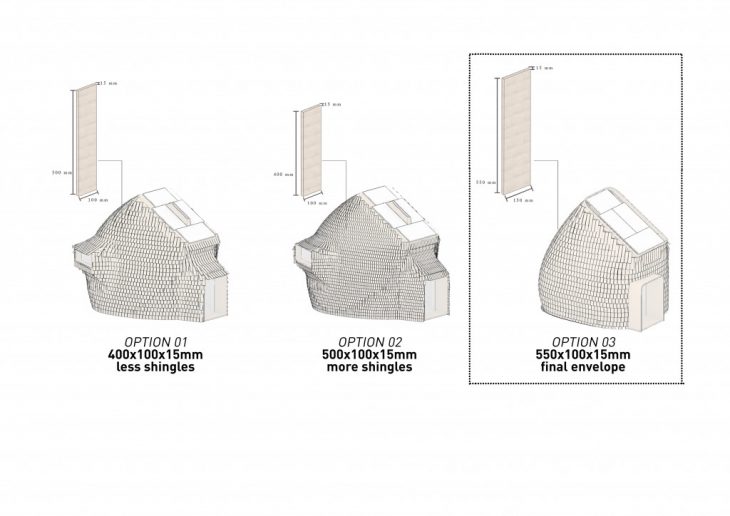
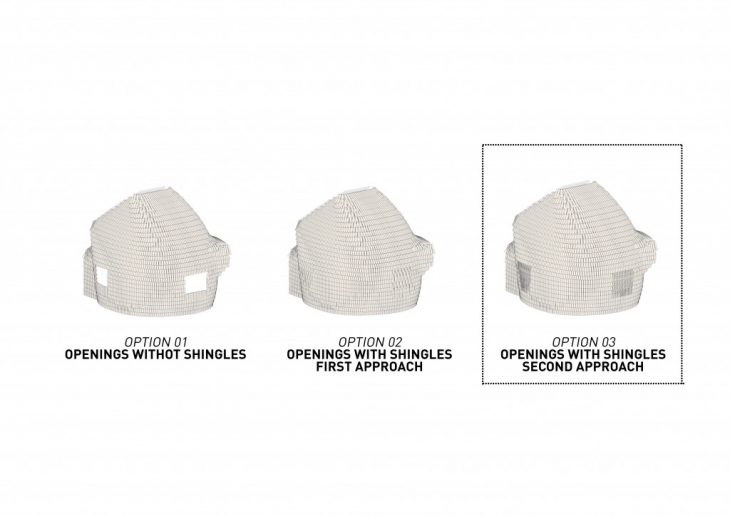
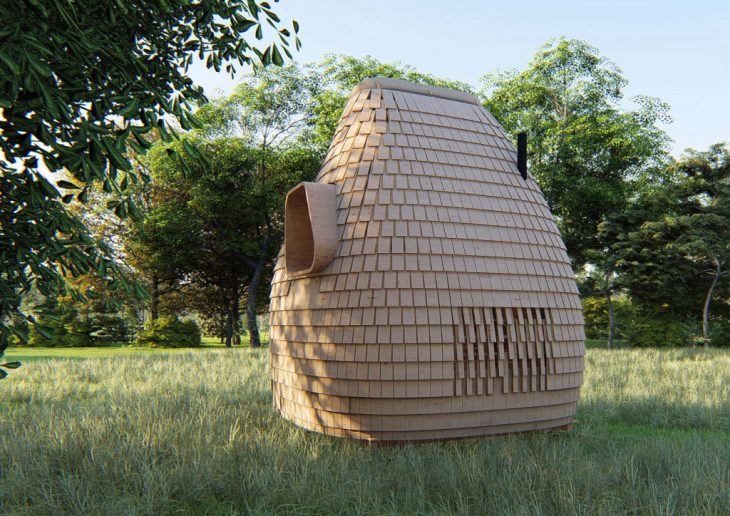
THE INTERIOR
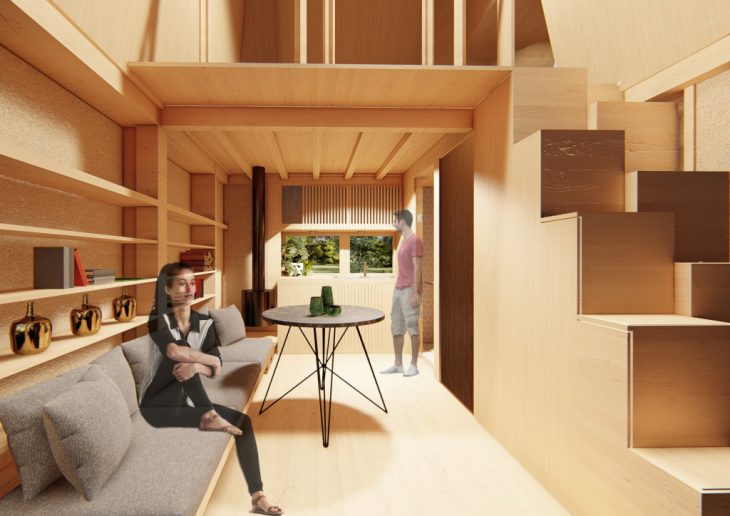
The organic form of the exterior (related to nature) is rationalized in the interior (related to humans) due to functional requirements.
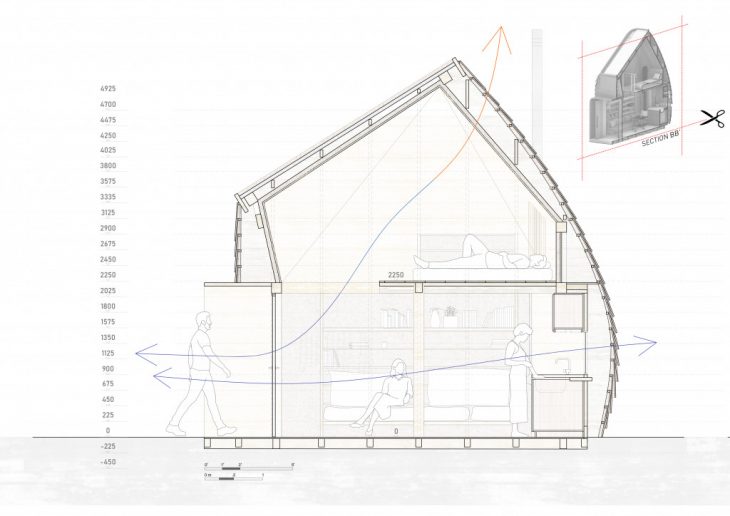 Through a study of the basic functions a house has to integrate, several dimensional and spatial studies were developed bringing us to the decision of taking a vertical module of 225mm which can solve all the activities: 225mm is a stair, 450mm becomes a sitting space, 900mm a kitchen countertop…
Through a study of the basic functions a house has to integrate, several dimensional and spatial studies were developed bringing us to the decision of taking a vertical module of 225mm which can solve all the activities: 225mm is a stair, 450mm becomes a sitting space, 900mm a kitchen countertop…
The other main strategy consists in grouping the wet (shower, water heater, water tanks, sink) and dry areas (dry toilet, sleeping, sitting, storage…)
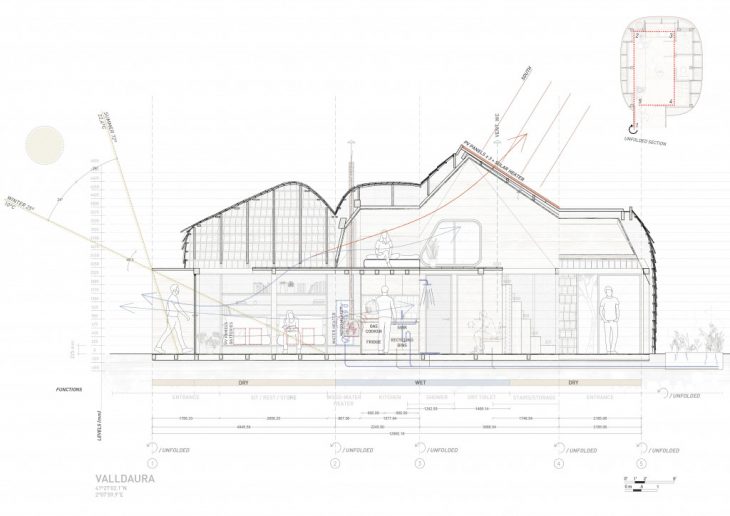
The combination of both strategies is summarized in an unfolded section which combines thermodynamic, spatial and metabolic requirements.
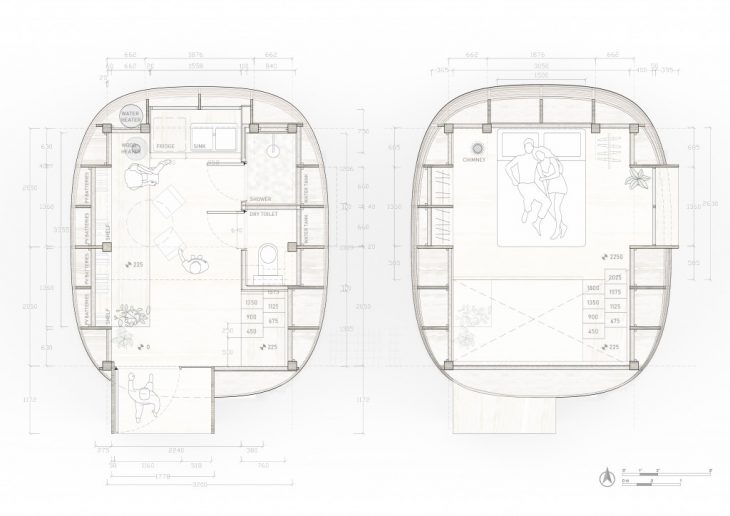
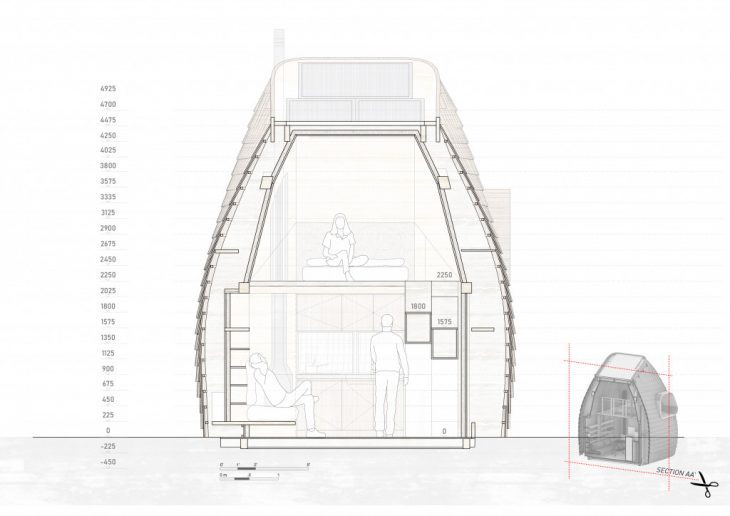 The dimensional constraints and preliminary studies take us to the decision of keeping a mostly free interior space through positioning the main functions in the boundary and providing a free area for living/eating.
The dimensional constraints and preliminary studies take us to the decision of keeping a mostly free interior space through positioning the main functions in the boundary and providing a free area for living/eating.
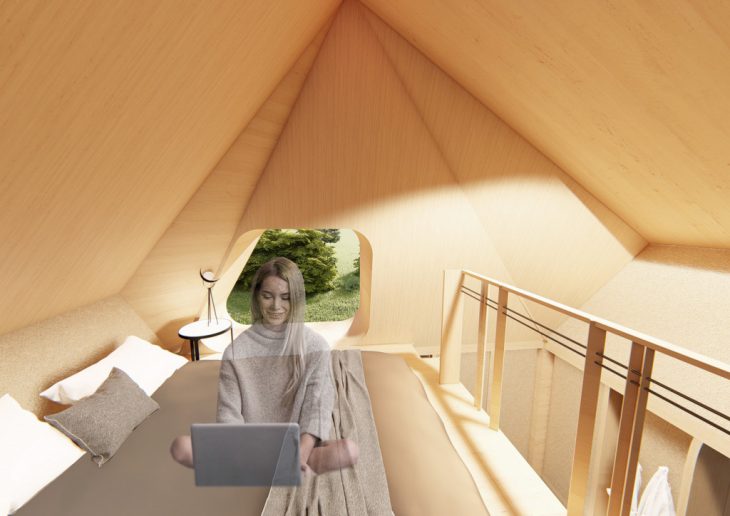
MATERIALS AND ECOLOGY
As a starting point the main material is locally sourced wood from Valldaura forest, that results in a very low footprint and a very easy upcycling.
Following the three structural systems of the project an analysis was made to optimize the woodcuts available to suit the structure. The leftovers will be used for interior partitions and flooring
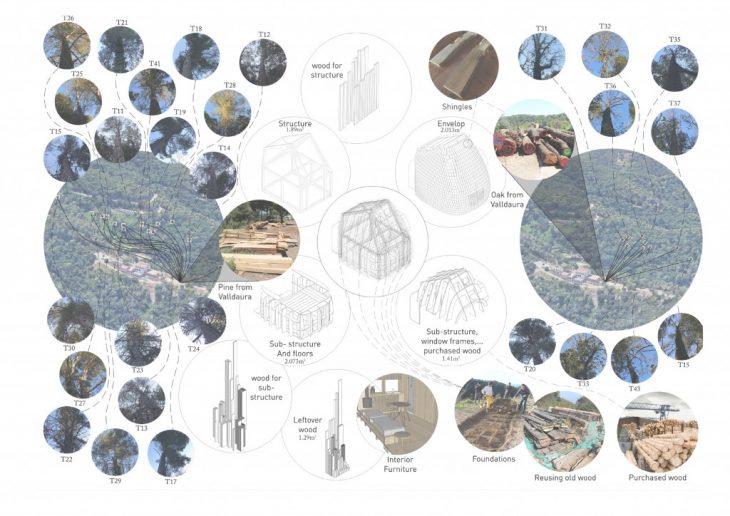
Basically everything we know in the world comes from the sun’s energy, so using the concept of emergy we analyzed the two main materials: wood and the pv system. Being sourced on site, wood results in a very low emergy while the pv systems account for 6 times the emergy of the wood structure.

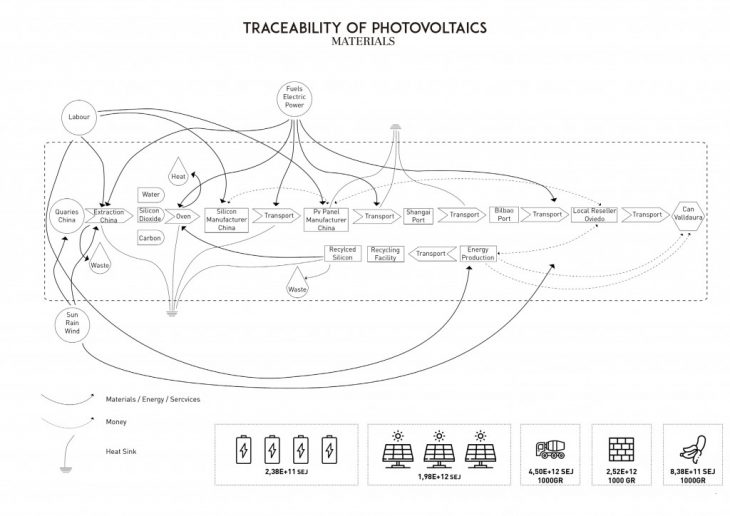
If this structure would be built entirely with clt, it would account for 3 times the emergy, and if it was built in steel it would result in at least 9 times the emergy.
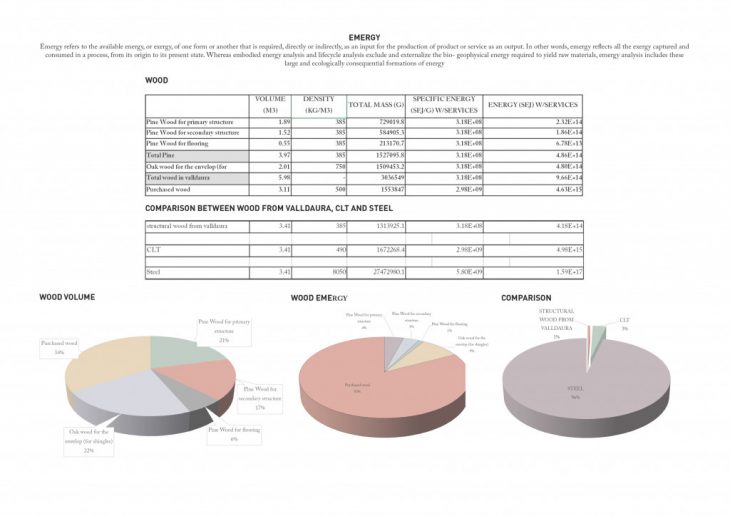
As a result this highlights the key aspect of the project of working with locally sourced materials that have a low impact on the planet.
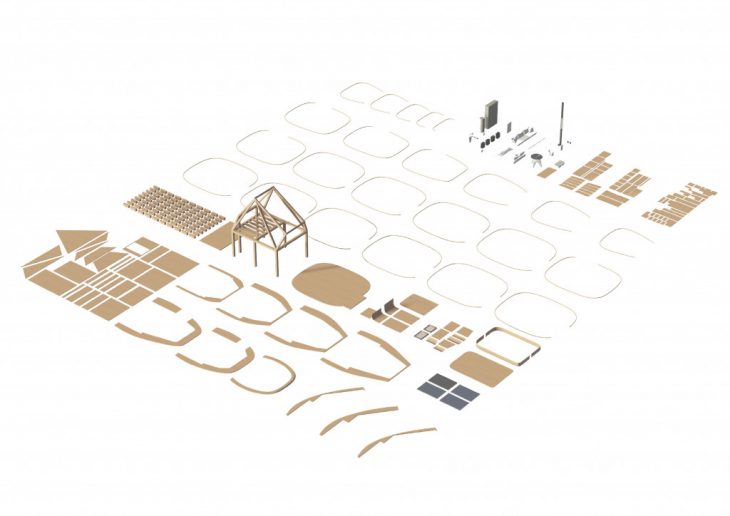
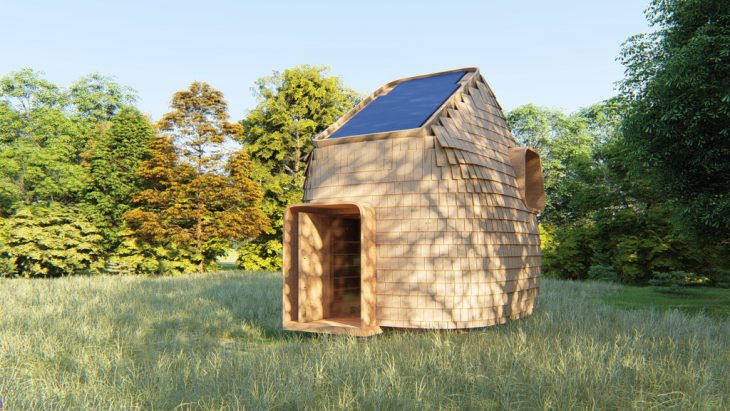
METABOLIC SYSTEM
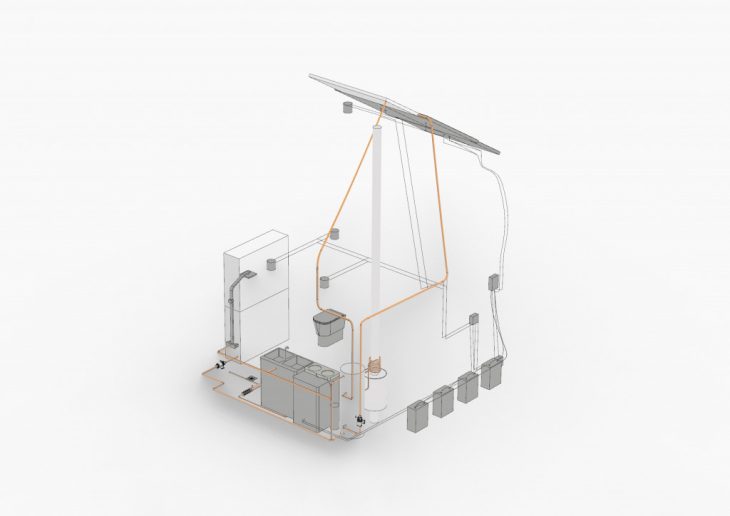
The metabolic system incorporates water, energy and information into one whole integrated system that feeds into the overall design. A system-based design allows us to adapt to multiple options as site location and client preferences change. We have investigated several system options dependent on exact requirements but have focused on a minimal system focused on reducing resource consumption for the prototype.
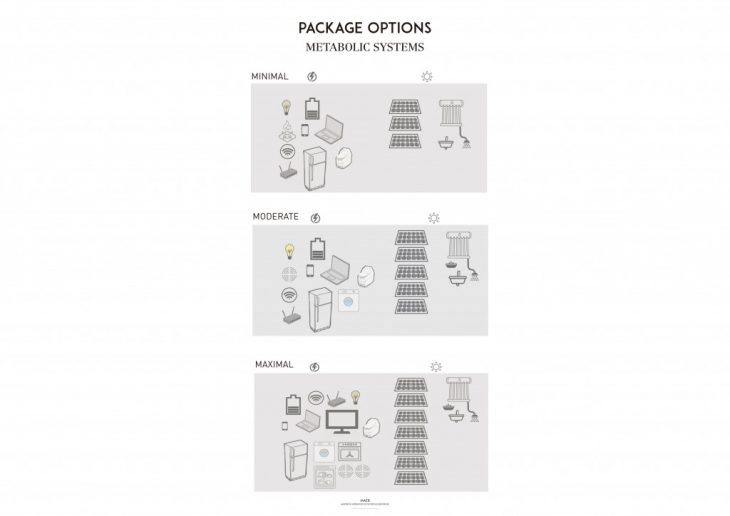
The prototype is designed to work off-grid with a photovoltaic installation (900 Watts) is sized to provide enough power for the user and store the excess of energy in batteries in order to allow for 3 days without sun
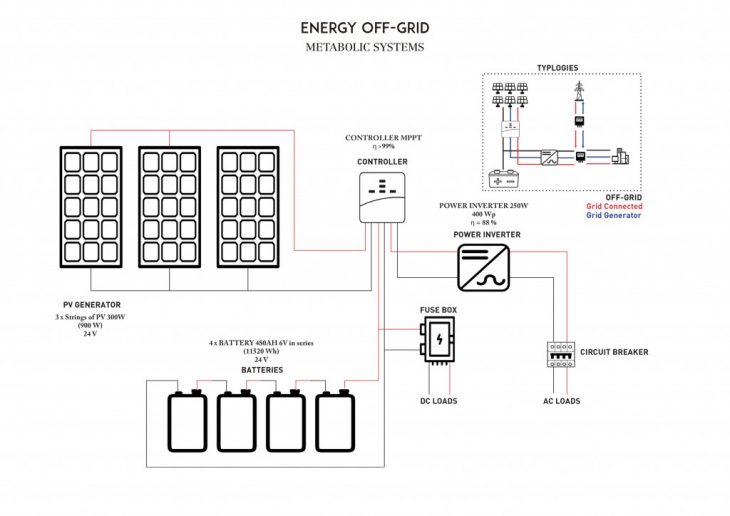
For hot water production, we are working with a thermo-solar panel that uses solar radiation to heat up the tank water. Our dual purpose wood heater also heats up the water via a copper heating coil to help the water reach the temperatures required in the months in which we do not have enough sun. As part of the overall concept the metabolic equipment is found between the skin and structure opening up more space for living.
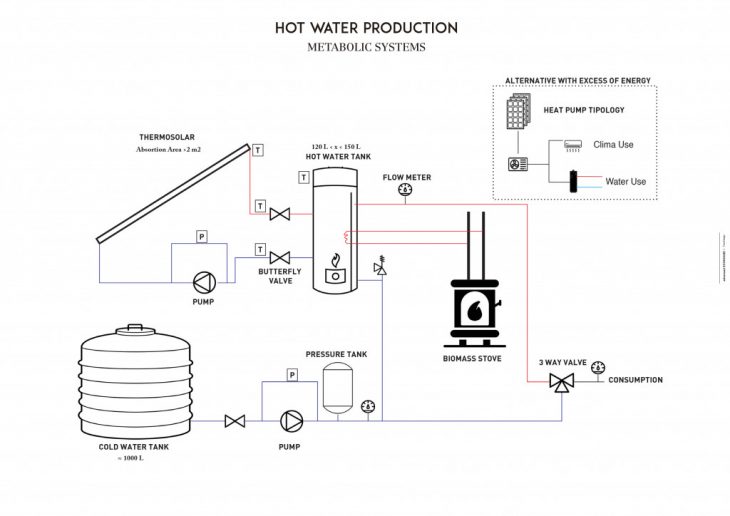
The water system is sized for seven days self-sufficiency counting on reduced water consumption of users due to limited appliances and hot water tank size. Water consumption is also drastically reduced with the use of the compost toilet. Rainwater harvesting is offered as an additional option depending on the amount of water that can be captured. In the case of more permanent living requirements we have designed a system using the “ShowerLoop” (
https://showerloop.org
) which reduces water use to only 42L per person per day by recycling grey water through the house appliances.
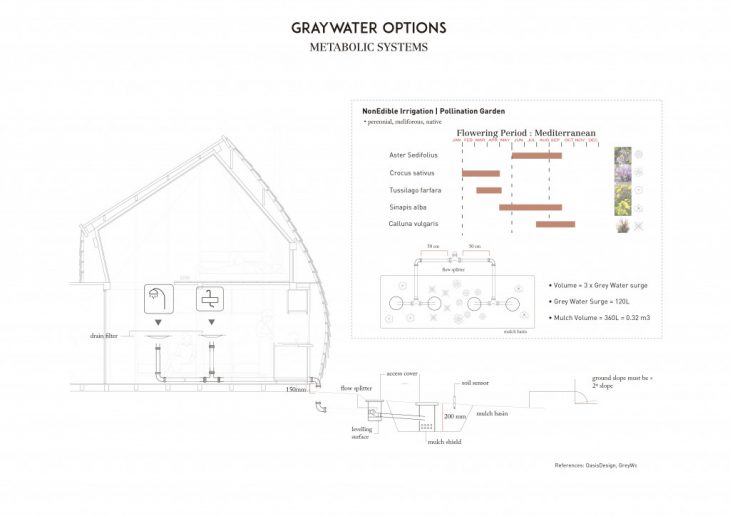
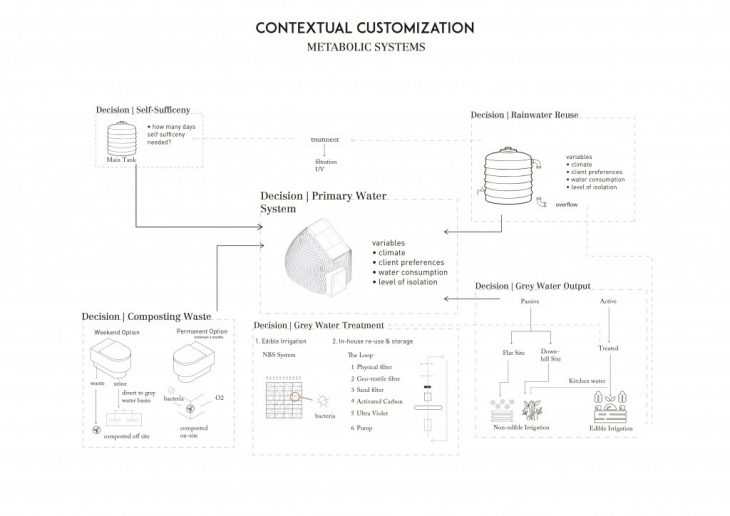
Every input of this project produces information we can potentially learn and benefit from. We have decided to approach information in multiple ways combining digital and more innate information to help explain the project and allow users to learn and connect with their living place and surrounds. We will have sensors monitoring important information like tank level and battery capacity that inform the user of their state through unobstrusive LED´s. We will also develop a ´tag´for the visible structural wood that allows anyone with a smart phone it scan and find out the story of this particular piece of wood. Finally we approach this prototype as a learning opportunity and we will gather data such as weather, functioning of the metabolic equipment etc to share with the Tiny House Network and access in more detail through an app.
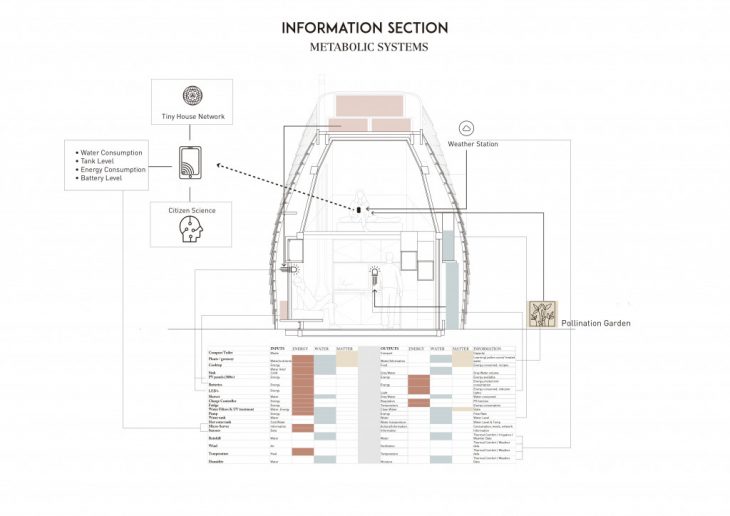
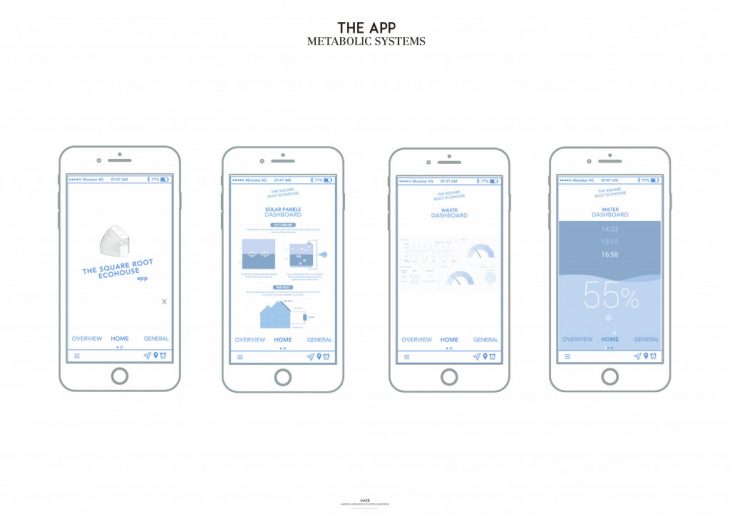
THE TINY ECOHOUSE
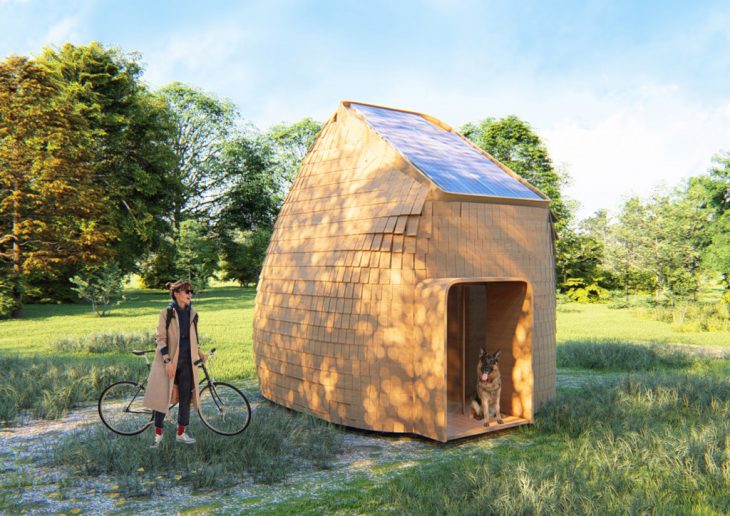
--------------------------------------------------------------------------------------------------------------- /PROJECT BY Pilar Aguirre + Giulia Astrachan + Jesús Carlos Bueno + Julianna Carmona + Vincent Charlebois + Yu-Wen Chen + Yu-Ching Chiang + Pablo Corroto + Nour El Kamali + Elisabet Fàbrega R.Roda + Kevin Matar + Jorge Luis Morales + Sinead Nicholson + Lian Qiao + Michael Salka + Yuanpei Tian + Zhipeng Yu + Jie Zhang + Heran Zu /DEVELOPED AT IaaC (Institute for Advanced Architecture of Catalonia), Valldaura Labs /COURSE MAEB (Master in Advanced Ecological Buildings) 2018-2019 /PROGRAM Prototype for a Tiny Ecohouse /LEADED BY Vicente Guallart + Daniel Ibáñez + Marziah Zad /LINK Valldaura Forest Management
